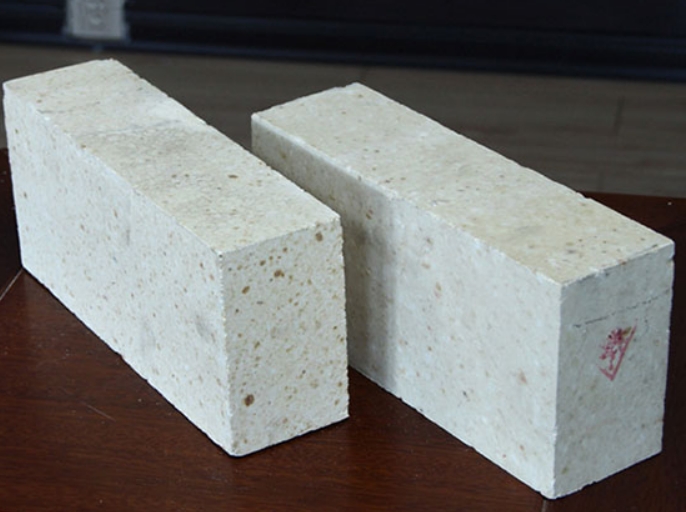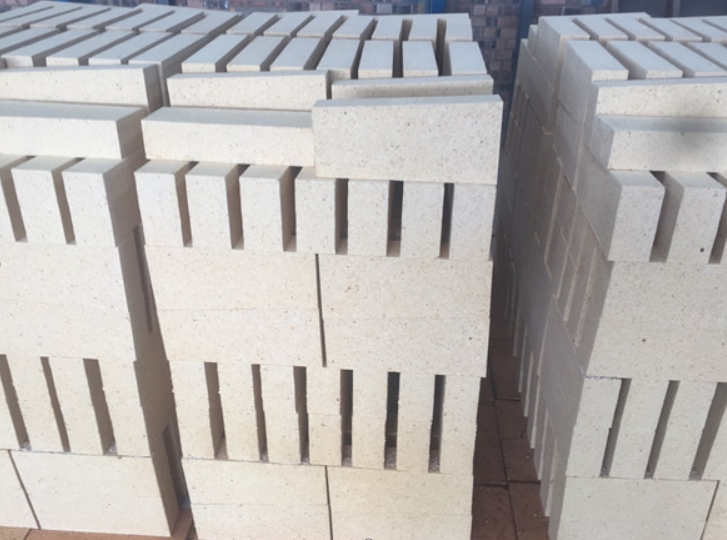- 08
- Sep
High alumina brick for blast furnace
High alumina brick for blast furnace
High alumina bricks for blast furnaces refer to refractory products made from high alumina bauxite clinker with an Al2O3 content of more than 48% and used to build blast furnaces. The blast furnace is the main equipment for ironmaking, and clay bricks are the lining materials that have been used very early in the blast furnace. Beginning in the 1950s, the volume of blast furnaces has grown to a large scale, and 8-12m diameter hearths have become more common. Productivity has increased rapidly. However, the furnace waist and belly corrosion obviously affect the production of Ruo blast furnace. The production process of high alumina bricks and multi-clinker clay bricks are similar. The difference is that the proportion of clinker in the ingredients is higher.
Blast furnace high alumina bricks refer to refractory products made from high alumina bauxite clinker with an Al2O3 content of more than 48% and used to build blast furnaces.
The blast furnace is the main equipment for ironmaking, and clay bricks are the lining materials that have been used very early in the blast furnace. Beginning in the 1950s, the volume of blast furnaces has grown to a large scale, and 8-12m diameter hearths have become more common. Productivity has increased rapidly. However, the furnace waist and belly corrosion obviously affect the production of Ruo blast furnace.

Craftsmanship:
The production process of high alumina bricks and multi-clinker clay bricks are similar. The difference is that the proportion of clinker in the ingredients is higher, which can be as high as 90-95%. The clinker needs to be sorted and sieved to remove iron before crushing, and the firing temperature Higher, such as Ⅰ, Ⅱ high alumina bricks are generally 1500~1600℃ when they are fired in a tunnel kiln.
Production practice in China has proved that before crushing, high-aluminum clinker is strictly sorted and classified, and stored in tiers. The use of bauxite clinker and combined clay fine grinding method can improve product quality.

birêvebirinî:
yek. Refractoriness
Parzûniya tûrikên alumînayê yên bilind ji ya tehtên heriyê û tuxleyên nîv-sîlîs bilindtir e, digihîje 1750 ~ 1790 ℃, ku ev malzemeyek refraktê ya bi kalîte ye.
b Germahiya nermkirina barkirinê
Ji ber ku hilberên bi alumîna bilind xwedan Al2O3 bilind in, kêmasiyên hindiktir, û laşên camê yên hindik hejandî ne, germahiya nermkirina barkirinê ji ya tehtên axê pirtir e. Lêbelê, ji ber ku krîstalên mulît avahiyek torê ava nakin, germahiya nermkirina barkirinê hîn jî ne bi qasî ya tehtên sîlîsayê ye.
c Berxwedana xaçê
Kevirên alumîna bilind zêdetir Al2O3 heye, ku nêzîkê malzemeyên nefretgir ên bêalî ye, û dikare li hember erozyona sermaya asîdî û xiroka alkalîn bisekine. Ji ber tevlêbûna SiO2, şiyana ku meriv li hember xîzika alkalîn bisekine ji ya xiroka asîdî lawaztir e.

Process points:
Natural bauxite materials require good calcination and strict classification. The iron oxide content in chemical analysis is controlled below 1.2%, and no concentrated iron spots or iron cores are allowed. High grade and high purity are required. Molded with a high-tonnage brick press, the shape of the brick is regular, and no surface net-like cracks and internal delamination are allowed. Ensure high brick density and firing temperature not lower than 1500℃.
